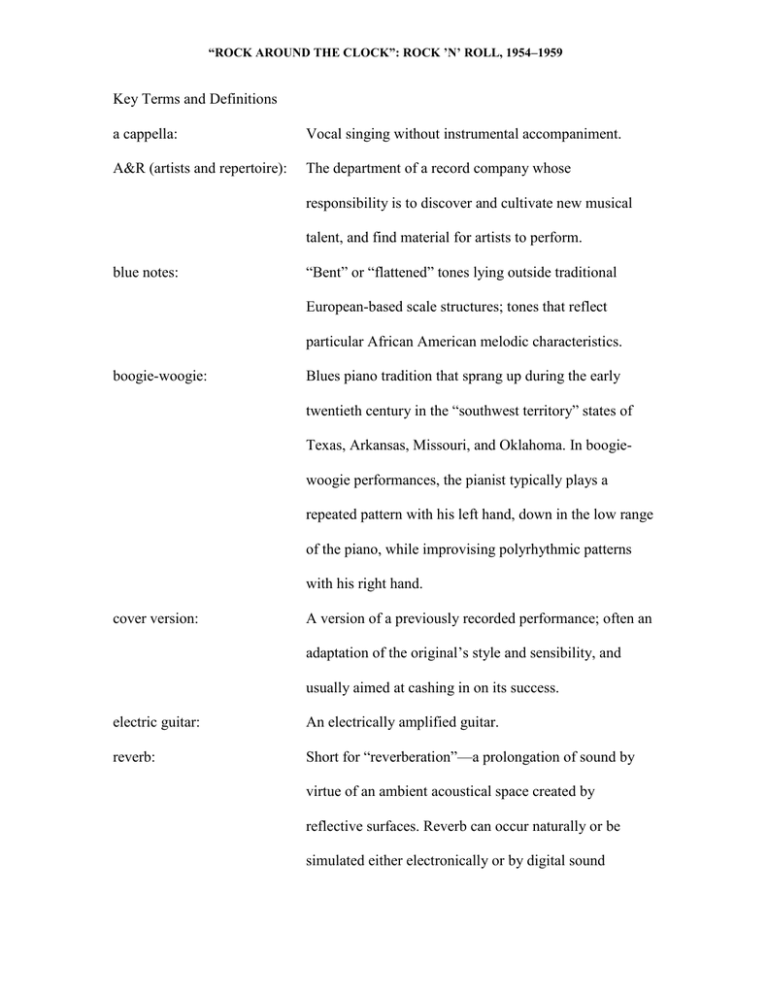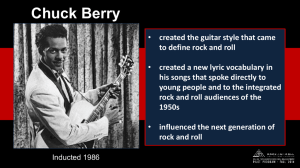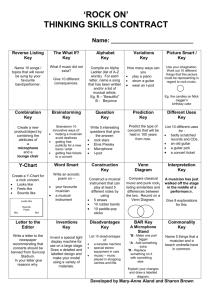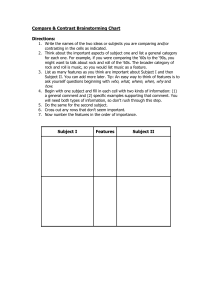Key Terms and Definitions a cappella: Vocal singing without instrumental accompaniment.
advertisement

“ROCK AROUND THE CLOCK”: ROCK ’N’ ROLL, 1954–1959 Key Terms and Definitions a cappella: Vocal singing without instrumental accompaniment. A&R (artists and repertoire): The department of a record company whose responsibility is to discover and cultivate new musical talent, and find material for artists to perform. blue notes: “Bent” or “flattened” tones lying outside traditional European-based scale structures; tones that reflect particular African American melodic characteristics. boogie-woogie: Blues piano tradition that sprang up during the early twentieth century in the “southwest territory” states of Texas, Arkansas, Missouri, and Oklahoma. In boogiewoogie performances, the pianist typically plays a repeated pattern with his left hand, down in the low range of the piano, while improvising polyrhythmic patterns with his right hand. cover version: A version of a previously recorded performance; often an adaptation of the original’s style and sensibility, and usually aimed at cashing in on its success. electric guitar: An electrically amplified guitar. reverb: Short for “reverberation”—a prolongation of sound by virtue of an ambient acoustical space created by reflective surfaces. Reverb can occur naturally or be simulated either electronically or by digital sound “ROCK AROUND THE CLOCK”: ROCK ’N’ ROLL, 1954–1959 processors. payola: Illegal practice, common throughout the music industry, of paying bribes to radio disc jockeys to get certain artists’ records played more frequently. producer: Behind-the-scenes role at a record company. Can be responsible for booking time in the recording studio, hiring backup singers and instrumentalists, assisting with the engineering process, and imprinting the characteristic sound of the finished record. R&B (rhythm and blues): African American musical genre that emerged after World War II. Consisted of a loose cluster of styles derived from black musical traditions, characterized by energetic and hard-swinging rhythms. At first performed exclusively by black musicians for black audiences, R&B came to replace the older category of “race records.” rock ’n’ roll: Introduced as a commercial and marketing term in the mid-1950s for the purpose of identifying a new target audience for musical products. Encompassed a variety of styles and artists from R&B, country, and pop music. rockabilly: Vigorous form of country and western music informed by the rhythms of black R&B and electric blues. Exemplified by artists such as Carl Perkins and the young Elvis Presley. “ROCK AROUND THE CLOCK”: ROCK ’N’ ROLL, 1954–1959 scat singing: Technique that involves the use of nonsense syllables as a vehicle for wordless vocal improvisation. solid-body electric guitar: Electrically amplified guitar developed after World War II and first used in R&B, blues, and country bands. strophic: Song form that employs the same music for each poetic unit in the lyrics.




